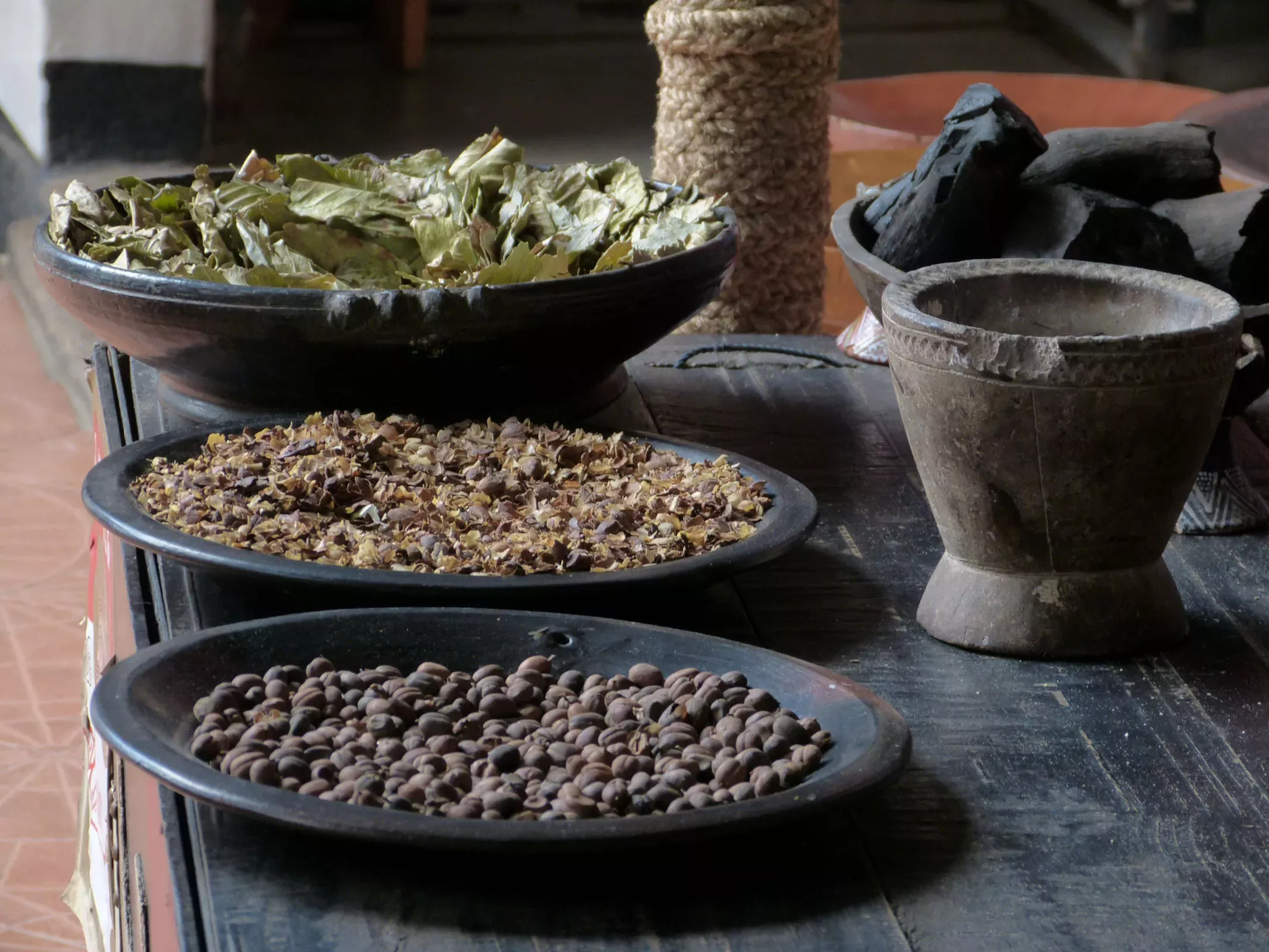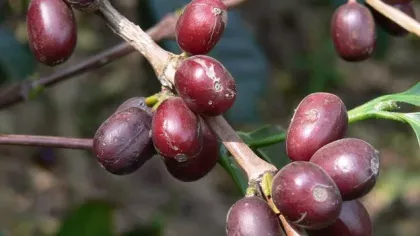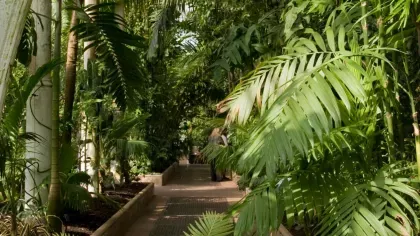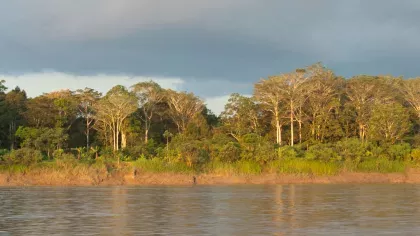15 October 2015
The UN Sustainable Development Goals and Kew’s Science
Following the UN Sustainable Development Summit 2015, Paul Wilkin explains how Kew is making a significant contribution to the UN’s sustainable development goals through its biodiversity science.

What are the UN Sustainable Development Goals?
The world adopted a new set of goals and targets to tackle poverty and hunger in late September when the United Nations Sustainable Development Summit 2015 unanimously approved the report Transforming our world: 2030 Agenda for Sustainable Development.
The report will guide global development policy until 2030 and provide a framework to guide strategy at institutes like the Royal Botanic Gardens, Kew (Kew).
There are 17 goals divided into 169 targets, which, if met in the next 15 years, will lead to the achievement of each sustainable development goal (SDG). They build on the work done in the last 15 years in response to the Millennium Development Goals that were the precursor to the SDGs.
Many of the SDGs are linked to or dependent on biodiversity and its exploitation, and hence meeting the targets will need excellent biodiversity science.

Kew and the SDGs: poverty and hunger
Kew is already making a strong contribution to reaching SDG goals and targets through the research outlined in its science strategy especially the major strategic outputs and the programme of its new Natural Capital & Plant Health Department.
The two most immediately relevant SDGs to Kew are the two that aim to end poverty and to end hunger through raising food security, improving nutrition and building more sustainable agriculture. They are particularly pressing goals given that approximately 1 billion people are still in extreme poverty, defined as living on less than $1.25 per day, and more than 800 million have insufficient food or are in food poverty.
Kew’s research on crop and other useful plant species has much to offer in terms of improving food security and livelihoods in some of the poorest communities. For example, climate resilience for coffee in Ethiopia was the subject of a recent blog. The key here is that 100 million farmers and their families worldwide depend on coffee, with 15 million in Ethiopia alone. Our research is protecting those livelihoods both now and in the decades to come.
Kew is also working in eastern and southern Africa to increase bean yields, which are currently just 20-25% of potential due to lack of pollination and insect pests. Research led by Phil Stevenson is investigating management of plant diversity in field margins to enhance and maintain populations of pollinators and other beneficial insects (such as wasps that parasitise bean aphids) and provide natural pesticides (Mkenda et al., in press).
Natural pesticides are particularly useful where commercial pesticides are less affordable and available. Beans are a major source of protein, micronutrients and vitamins to poorest households and the project will therefore improve nutrition.
We are also working to conserve wild and cultivated yams and associated biocultural knowledge in Madagascar and Ethiopia. These plants have the potential to increase both food intake and income in the short term; Dioscorea orangeana (Wilkin et al., 2009) is a highly sought after species that sells for up to £1 per kilogram, but is a very heavily exploited narrow endemic species.
We are looking to use the conserved reservoirs of yam diversity (Abebe et al., 2013) and associated information as the basis of long term sustainability based on diversity through providing access to traits needed by farmers and breeders. Several important elements of our research on coffee, beans and yams have been funded through the UK Darwin Initiative.

Human health and well-being
Projects contributing to combatting poverty and hunger in a range of biodiversity-rich but economically disadvantaged areas were highlighted in a recent blog linking the conservation of plant diversity to sustainable development, including Project MGU - the Useful Plants Project.
However, this project additionally works more directly than those above with human health and wellbeing through its work with under-utilised medicinal plants such as Lippia graveolens in Mexico and Lippia multiflora in Mali. Some, such as the Marama bean (Tylosema esculentum) from Botswana, have multiple reported food and medicinal uses and great potential to improve lives in a range of ways contributing to multiple SDGs.
Human health was also featured in a Kew blog on Amazonian medicinal plants and we have extensive and developing expertise in the role of natural product chemistry in human health (e.g. Howes & Simmonds, 2014).
Combatting climate change
The research on climate resilience for coffee in Ethiopia described above has led the way in this area at Kew. We plan to apply similar approaches to other crop and resource plants, and to add further modelling approaches to our portfolio during the part of the SDG cycle covered by our science strategy.
Protecting, restoring and sustainably using terrestrial ecosystems
This SDG is integral to much of Kew’s scientific programme, both through major strategic outputs like State of the World’s Plants and Tropical Important Plant Areas at global scale and national or regional projects like Forest Futures Bolivia and The Great Green Wall that use agroforestry approaches based on locally appropriate tree species to protect and maintain ecosystems that underpin livelihoods.

Access to energy
Food and energy form a nexus in global agriculture: raising production of energy from plant sources can reduce food production. We are part of a research team investigating how energy and other industrial crops compete with food crops in in sub-Saharan Africa, in areas where hunger is often close at hand.
Gender equality
Kew has a wealth of information on plants with gender-specific uses, but we aim to deliver more towards this SDG by 2030 in areas where gender equality issues touch on biodiversity, such as where decisions on land use are based on gender lines.
Enabling achievement of SDGs through plant and fungal knowledge
Above all else, Kew’s ability to contribute to achieving the SDGs is based on being a unique plant and fungal knowledge resource that the world can draw on.
One example is the Useful Plants and Fungi Portal which will be built during the SDG timeframe and will rationalise the current scattered landscape of plant and fungal information together into one authoritative online system, for the first time at global scale. This will enable portal users from policymakers to scientists to make progress towards all seven plant and fungal-related SDGs given above.
Across the spectrum of its science activity, Kew attaches great importance to the SDGs and to the global improvements they will drive.
We seek to use our knowledge and expertise to aid progress towards a scenario where everyone is as well provided for as the Ethiopian farmers in the image above. Each smallholding in this unique and beautiful montane agro-landscape provides a family with both their annual plant resources needs and an income.
References
Abebe, W., Demissew, S., Fay M.F., Smith, R.J, Nordal. I. & Wilkin. P. (2013). Genetic diversity and species delimitation in the Cultivated and Wild Guinea Yams from Southwest Ethiopia as determined by AFLP (Amplified Fragment length Polymorphism) Markers. Genetic Resources & Crop Evolution 60: 1365–1375. Available online
Howes, M.-J.R. & Simmonds, M.S.J. (2014). The role of phytochemicals as micronutrients in health and disease. Current Opinion in Clinical Nutrition and Metabolic Care 17: 558-566. Available online
Mkenda, P., Mwanauta, R., Stevenson, P.C., Ndakidemi, P., Mtei, K. & Belmain, S.R. (2015). Field margin weeds provide economically viable and environmentally benign pest control compared to synthetic pesticides. PLoS One, in press.
Wilkin, P., Weber, O., Hladik, A., Hladik C.M. & Jeannoda, V. (2009). Dioscorea orangeana (Dioscoreaceae), a new and threatened species of edible yam from northern Madagascar. Kew Bulletin 64: 461–468. Available online



